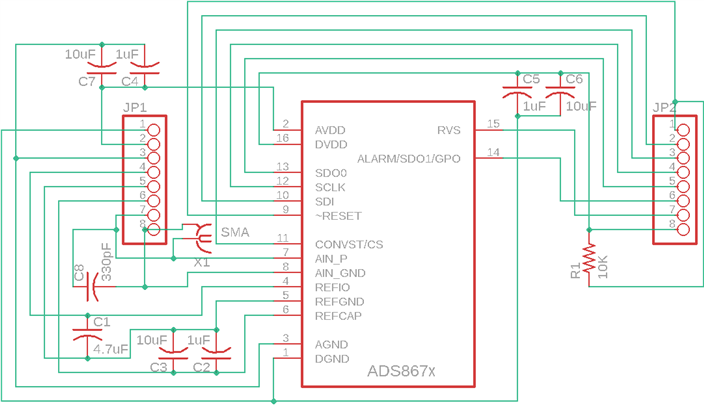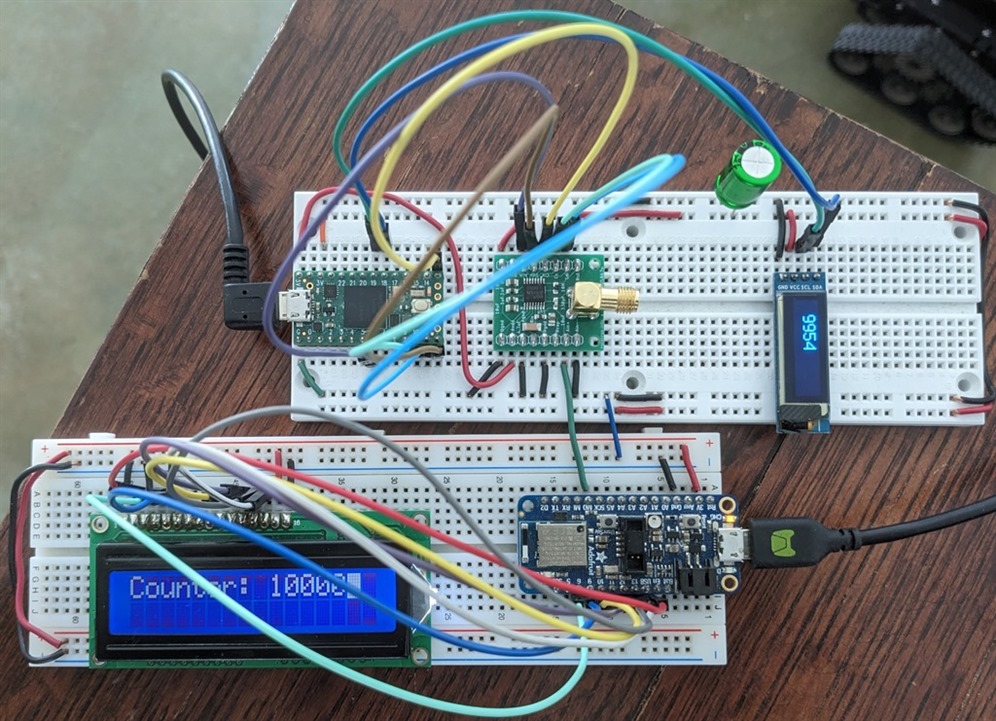Other Parts Discussed in Thread: OPA320
I'm trying to count random pulses that cross a negative trigger threshold of -55 mV for only about 25-50 microseconds. The ADS8671 is almost working but it's occasionally skipping pulses.
I think the problem is due to the 15 kHz Low-Pass filter in front of the detector, since 15 kHz -> 66 microseconds. Is there a way to speed up the ADC so I don't lose pulses? Would modifying the decoupling capacitor between REFIO and REFGND help or is there a better approach?



